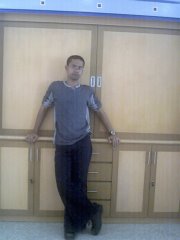Saturday, December 13, 2008
Taruh Ponsel Di Saku Celana Bikin Pria Mandul
Hal tersebut disampaikan Prof.Dr.dr Wahyuning Ramelan SpAnd (Spesialis Andrologi) Brawijaya Women & Children Hospital, saat diskusi Mendambakan Punya Momongan, di Brawijaya Women & Children Hospital, Jakarta, Sabtu (13/12).
Saat ini, banyak penelitian yang menunjukkan bahwa ponsel mengandung elektrostatik dan elektromagnetik. Menurut dr Ramelan, menaruh handphone di saku celana berpotensi lebih besar mengakibatkan infertilitas pada kaum lelaki karena berada lebih dekat dengan organ vital lelaki.
"Hindari taruh handphone di kantong celana. Lebih baik taruh di kantong baju atau pinggang. Di pinggang kan lebih jauh tempatnya. Dan kan lebih keren," kata dr Ramelan.
Selain itu, dr Ramelan menyebut komputer juga merupakan salah satu media penghasil elektrostatik dan elektromagnetik. Karena itu, katanya, berada terlalu lama di depan komputer akan mengakibatkan infertilitas pada lelaki.
"Jangan dari pagi hingga sore di depan komputer. Minimal 2 jam kemudian istirahat 1 jam," tutur dr Ramelan.
Upaya pencegahan infertilitas lelaki dapat dicegah dengan berbagai cara, antara lain dengan menjalani pola hidup sehat, makan-makanan yang bergizi baik, menambah antioksidan, vitamin C dan E, mengonsumsi suplemen, menghindari rokok, dan jangan sampai memperoleh Penyakit Menular Seksual (PMS).
Taken from: Kompas
Sunday, December 07, 2008
Wolter Mongisidi

 Mongisidi adalah pahlawan nasional yang paling unik. Dia bukan seorang militer. Tidak menyandang pangkat kemiliteran apapun. Bukan pejabat negara yang punya kekuasaan atau bangsawan yang punya kharisma. Dia juga bukan tokoh masyarakat yang punya massa dengan kaitan emosional. Mongisidi ya Mongisidi. Seorang patriot yang tak punya apa-apa. Satu-satunya yang dia miliki hanya kehormatan. Kehormatan harga diri bangsanya yang dia bawa sampai mati.
Mongisidi adalah pahlawan nasional yang paling unik. Dia bukan seorang militer. Tidak menyandang pangkat kemiliteran apapun. Bukan pejabat negara yang punya kekuasaan atau bangsawan yang punya kharisma. Dia juga bukan tokoh masyarakat yang punya massa dengan kaitan emosional. Mongisidi ya Mongisidi. Seorang patriot yang tak punya apa-apa. Satu-satunya yang dia miliki hanya kehormatan. Kehormatan harga diri bangsanya yang dia bawa sampai mati. Saya beruntung sekali, bisa mencium harumnya kepahlawanan Mongisidi dari pengalaman langsung orang tua saya. Kebetulan, ayah saya berkenalan serta berteman baik dengan Mongisidi, terutama di saat-saat akhir hayat pria Bantik (Minahasa) itu.
Tembak mati
Suatu malam ayah saya makan malam bersama Dr. Chris Soumokil, pendiri Republik Maluku Selatan bersama keluarganya di rumah ibu pejuang terkenal Sulawesi Selatan, Patta Kandjene, di Pare-Pare, sebuah kota di utara Sulawesi Selatan. Hari itu 5 September 1949. Setelah makam malam itu, ayah saya bergegas ke rumah dr. Soeparto. Dia seorang dokter yang banyak membantu kaum nasionalis yang cedera, kala melawan pendudukan NICA di kawasan Sulawesi Selatan.
Di rumah dr. Soeparto itu, berita kematian Mongisidi pertama kali diketahui umum, Ketika tengah malam, ayah saya menerima telepon dari sahabatnya, dr. Darjono, yang kelak menjadi perwira intelijen dalam operasi pembebasan Irian Barat yang dipimpin Soeharto (kemudian menjabat presiden RI). Suara dr. Darjono terdengar gugup dan datar, seolah ada yang sulit diungkapkan.
“Bote sudah mereka eksekusi…!”, kata dr. Darjono. Bote adalah nama akrab Wolter Mongisidi. Dia juga menambahkan, bahwa eksekusi dilakukan dini hari. Mendengar suara itu ayah saya langsung lemas dan sangat sulit untuk percaya. Lalu dia mendesak ayah saya untuk memberitahu kematian Mongisidi kepada Ibu Salawati dan Henk Rondonuwu. Keduanya tokoh pejuang Sulawesi Selatan.
Eksekusi mati Mongisidi membuat gempar kota Pare Pare, yang lama mengetahui sepak terjang heroiknya. Bahkan ketika kembali ke Makassar, masyarakat di sana sangat emosional dan eksplosif. Para tokoh kemasyarakatan dan parlemen Negara Indonesia Timur mendesak agara jenasah Mongisidi dipindah ke pemakaman kristen. Mereka marah!
Digali kembali
Melalui suatu kesepakatan dengan Belanda, kuburan Mongisidi digali kembali setelah 30 jam dieksekusi. Lokasi penggalian terletak di daerah Tallo. Sebuah tempat di luar kota Makassar. Tak sembarang orang diijinkan ikut penguasa Belanda. Ayah saya beruntung, bersama dr. Darjono dan seorang sahabat bernama Sangkala, serta beberapa orang lainnya, yang bisa ikut menyaksikan penggalian kembali. Tentunya tak lepas dari pengawasan beberapa perwira Koninklijke Landmacht, tentara kerajaan Belanda, serta seorang sersan Belanda berusia 35 tahun. Si sersan ini seorang algojo yang kerap hadir dalam penjagalan lawan-lawan Belanda. Suaranya serak dan berat yang mengekspresikan bisnisnya dengan pencabutan nyawa manusia.
Suasana penggalian begitu mencekam dan mendebat. Tanah yang masih lembab itu digali perlahan dan semua mata terpaku ke liang lahat. Ada juga menyaksikan seorang pendeta KNIL (tentara Hindia Belanda) yang kerap menggenggam Injil ditangannya. Ayah saya mencoba memberi isyarat kepada Sangkala supaya mengambil foto. Tapi langsung digubris dan dipelototi oleh si algojo dengan nada mengancam untuk menghancurkan kamera kami. Namun rekan ayah saya Darjono berhasil mendekati si algojo sehingga melunakan hatinya. Sejak itu sang algojo mau diajak bicara dan mulai buka mulut,
“Anda menyaksikan Mingisidi ditembak?”, tanya ayah saya kepada si algojo. Saat pertanyaan itu meluncur, seketika muncul sikapnya sebagai seorang prajurit sejati yang jujur dan obyektif. Dengan ekspresi menyeramkan, si algojo mengungkapkan perasaannya.
“Ik heb nooit in mijn leven zo’n brave kerel gezien”. “Belum pernah sepanjang hidup saya melihat orang sesatria dia”, si algojo mengaku. Ketika didesak mengapa dia berpendapat seperti itu. Dengan jujur dia menjelaskan, “Dia (Mongisidi) adalah seorang satria, seorang pemberani dan teguh dengan keyakinannya” Kata si algojo, Mongisidi tidak pernah menunjukkan ekspresi goyah atas apa yang ia percayai. Tak ada keraguan sedikitpun pada dirinya. Waktu matanya mau ditutup sehelai kain saat dieksekusi, Mongisidi menolak mentah-mentah. Bahkan dia tak mau tangannya diikat di tiang eksekusi seperti biasa seorang akan dieksekusi. Dia menatap penuh ketenangan para penembaknya. Matanya tak berkedip di saat-saat terakhir peluru menghancurkan tubuhnya.
Sebelum kedua belas anggota regu tembak menghentikan hidupnya, seorang pendeta Kristen sempat berdoa dengannya, Mongisidi mengucapkan terima kasih sambil memegang erat tangan sang pendeta sambil mengeluarkan beberapa kalimat ksatri. “Saya bersedia hadapi kenyataan ini dengan ketabahan dan keimanan”.
Si algojo bermuka bengis itu, juga mengungkapkan suatu fakta yang sulit dia terima. Menurut ceritanya, Mongisidi sempat mengucapkan kata-kata terakhir kepada regu tembak yang akan meremukkan tubuhnya. “Laksanakan tugas saudara-saudara. Saudara-saudara memang tidak bersalah, hanya melaksanakan tugas. Saya memaafkan saudara dan semoga uhan mengampuni dosa-dosa saudara!” Pernah seorang jaksa dari pengadilan Negara Indonesia Timur pernah datang ke sel tahanannya dan memberi tahu bahwa kedua orang tuanya telah meminta grasi. Syaratnya, Mongisidi harus menandatangai surat grasi itu.
“Wat? Gratie? Ga naar de maan!”. Apa? Grasi? Persetan! Saya tidak membutuhkannya!, jawab Mongisidi dengan nada suara setengah berteriak.
Mendengar ucapan itu, si jaksa kaget dan membalikkan badannya sambil keluar dan memalingkan pandangannya kepada seorang kawannya,“Dat is pas een brave karel!”
Itu baru bilang pemuda satria sejati!
Tak ada suara mengerang keluar dari mulur Mongisidi ketika meluru mendentum serentak mencabut nyawanya. “Sungguh luar biasa! Saya hampir-hampir tidak percaya melihat orang semacam dia”, kata sersan algojo itu memuji musuhnya yang kuburannya sedang digali kembali.

*) Foto bersama di Kiskampement Makasar tanggal 20-4-1949 tempat Wolter Wobert Monginsidi (berdiri paling kiri) ditahan. Tampak ayahnya Petrus Monginsidi (duduk), Kakaknya, Joseph dan Jan Monginsidi.
Ayah saya melihat sendiri bagaimana kokohnya keteguhan seseorang akan kebenaran yang diyakininya , seperti yang dipertunjukkan saat mayat Mongisidi digali kembali. Wajah Mongisidi terlihat seperti tidur nyenyak dalam peti yang lembab. Jenazahnya tak menyebarkan bau yang tak sedap, Pakaiannya begitu sederhana. Kepala terbaring bukan diatas bantal, tetapi di atas Injil. Dalam kitab suci itu terselip secarik kertas bertuliskan. “Setia hingga terakhir didalam keyakinan. Tertanda 5 September 1949. RWM”. RWM adalah kependekan nama lengkapnya, Robert Wolter Mongisidi.
Orang awam jadi pahlawan nasional
Wolter Mongisidi membuktikan bahwa orang awam pun bisa jadi pahlawan, meskipun apa yang dia perbuat tak mengharapkan sesuatu pujian. Apalagi diberi gelar pahlawan nasional. Sebuah sebutan tertinggi untuk sebuah pengorbanan untuk negara.
Sampai sekarang susah menjumpai pahlawan nasional yang berasal dari kalangan awam. Pahlawan lebih dilihat sebagai pekerjaan yang dijalani seorang mantan pejabat negara, perwira militer atau kaum bangsawan, yang secara mampu melakukannya, karena dia punya otoritas untuk melakukannya.
Bung Tomo dan juga Mongisidi adalah contoh yang ingin membakukan pengertian pahlawan. Bahwa pahlawan adalah orang yang melakukan darma yang memang bukan pekerjaannya. Kalau saya membesarkan anak saya sampai berhasil, saya bukan pahlawan bagi keluarga. Memang seharusnya begitu. Pahlawan di Indonesia selalu diartikan sebagai tindakan heroik dalam arti kontak fisik dan membuat kebijakan politis yang menguntungkan Indonesia. Dan orang itu “harus suci” dari kesalahan manusiawi. Makanya pahlawan pasti orangnya sudah mati. Takut-takut kalau masih hidup bisa berbuat sesuatu yang melunturkan nilai heroic yang pernah dibuatnya.
Pahlawan jadi brand
Yang aneh sekarang adalah memori kita tentang pahlawan. Untuk mengenang jasa-jasa mereka, kita banyak dibantu dengan sebuah brand atau produk. Banyak yang tak tahu siapa Gajah Mada. Tapi siapa yang tak kenal Bak Mie Gajah Mada? Hampir semua tahu dan pernah makan di McDonal Sarinah Thamrin. Tapi siapa yang tahu perjuangan Sarinah dan siapa itu Thamrin?
Bayangkan kalau ada kalimat “McDonald Sarinah Thamrin, bukan cabang di Tendean sama di Halim. Letaknya antara Sudirman Tower dan Universitas Bung Hatta, berhadapan dengan Rasuna Imperium, di ujung Imam Bonjol, tak jauh dari ayam goreng Hayam Wuruk dan apotik Mongisidi”

*) Bandara Wolter Monginsi di terminal baru Bandar Udara Wolter Monginsidi, Kendari.
Untunglah kita masih mengenal nama pahlawan dari brand atau nama jalan. Pak Harto pernah melarang penggunaan pahlawan menjadi nama brand. Tapi upaya itu mulai luntur seiring dengan kejatuhannya. Memang ada beberapa tokoh yang berwasiat agar namanya tidak diabadikan untuk sebuah penamaan jalan atau bangunan. Namun itu tak bisa membendung keinginan masyarakat untuk mengenangnya.
Taken from www.kompas.com
Jakarta in The Eyes of Foreigners


Today, high-rises dot the skyline, hundreds of thousands of vehicles
belch fumes on congested traffic arteries and super-malls have become
the cultural centers of gravity in Jakarta, the fourth largest city in
the world. In between towering super-structures, humble kampongs house
the majority of the city dwellers, who often have no access to basic
sanitation, running water or waste management.
While almost all major capitals in the Southeast Asian region are
investing heavily in public transportation, parks, playgrounds,
sidewalks and cultural institutions like museums, concert halls and
convention centers, Jakarta remains brutally and determinately
'pro-market' profit-driven and openly indifferent to the plight of a
majority of its citizens who are poor.
Most Jakartans have never left Indonesia, so they cannot compare their
capital with Kuala Lumpur or Singapore; with Hanoi or Bangkok .
Comparative statistics and reports hardly make it into the local media.
Despite the fact that the Indonesian capital is for many foreign
visitors a 'hell on earth,' the local media describes Jakarta as
"modern," "cosmopolitan, " and "a sprawling metropolis."
Newcomers are often puzzled by Jakarta's lack of public amenities.
Bangkok, not exactly known as a user-friendly city, still has several
beautiful parks. Even cash-strapped Port Moresby, capital of Papua New
Guinea, boasts wide promenades, playgrounds, long stretches of beach and
sea walks. Singapore and Kuala Lumpur compete with each other in
building wide sidewalks, green areas as well as cultural establishments.
Manila, another city without a glowing reputation for its public
amenities, has succeeded in constructing an impressive sea promenade
dotted with countless cafes and entertainment venues while preserving
its World Heritage Site at In tramuros. Hanoi repaved its wide sidewalks
and turned a park around Huan-Kiem Lake into an open-air sculpture museum.
 But in Jakarta, there is a fee for everything. Many green spaces have
But in Jakarta, there is a fee for everything. Many green spaces havebeen converted to golf courses for the exclusive use of the rich. The
approximately one square kilometer of Monas seems to be the only real
public area in a city of more than 10 million. Despite being a maritime
city, Jakarta has been separated from the sea, with the only focal point
being Ancol, with a tiny, mostly decrepit walkway along the dirty beach
dotted with private businesses.
Even to take a walk in Ancol, a family of four has to spend
approximately $4.50 (40,000 Indonesian Rupiahs) in entrance fees,
something unthinkable anywhere else in the world. The few tiny public
parks which survived privatization are in desperate condition and mostly
unsafe to use.
There are no sidewalks in the entire city, if one applies international
standards to the word "sidewalk." Almost anywhere in the world (with the
striking exception of some cities in the United State, like Houston and
Los Angeles) the cities themselves belong to pedestrians. Cars are
increasingly discouraged from travelling in the city centres. Wide
sidewalks are understood to be the most ecological, healthy and
efficient forms of short-distance public transportation in areas with
high concentrations of people.
In Jakarta, there are hardly any benches for people to sit and relax,
and no free drinking water fountains or public toilets. It is these
small, but important, 'details' that are symbols of urban life anywhere
else in the world.
Most world cities, including those in the region, want to be visited and
remembered for their culture. Singapore is managing to change its
'shop-till-you- drop' image to that of the centre of Southeast Asian
arts. The monumental Esplanade Theatre has reshaped the skyline,
offering first-rate international concerts in classical music, opera,
ballet, and also featuring performances from some of the leading
contemporary artists from the region. Many performances are subsidized
and are either free or cheap, relative to the high incomes in the city-state.
Kuala Lumpur spent $100 million on its philharmonic concert hall, which
is located right under the Petronas Towers , among the tallest buildings
in the world. This impressive and prestigious concert hall hosts local
orches tr a companies as well top internationalperfor mers. The city is
currently spending further millions to refurbish its museums and
galleries, from the National Museum to the National Art Gallery .
Hanoi is proud of its culture and arts, which are promoted as its major
at tr action millions of visitors flock into the city to visit countless
galleries stocked with canvases, which can be easily described as some
of the best in Southeast Asia. Its beautifully restored Opera House
regularly offers Western and Asian music treats.
Bangkok's colossal temples and palaces coexist with ex tr emely
cosmopolitan fare international theater and film festivals, countless
performances, jazz clubs with local and foreign artists on the bill, as
well as authentic culinary delights from all corners of the world. When
it comes to music, live performances and nightlife, there is no city in
Southeast Asia as vibrant as Manila .
 Now back to Jakarta. Those who have ever visited the city's 'public
Now back to Jakarta. Those who have ever visited the city's 'publiclibraries' or National Archives building will know the difference. No
wonder; in Indonesia education, culture and arts are not considered to
be 'profitable' (with the exception of pop music), and are therefore
made absolutely irrelevant. The country spends the third lowest amount
in the world on education (according to The Economist, only1.2 percent
of its GDP) after Equatorial Guinea and Ecuador (there the situation is
now rapidly improving with the new progressive government).
Museums in Jakarta are in appalling condition, offering absolutely no
important international exhibitions. They look like they fell on the
city from a different era and no wonder the Dutch built almost all of
them. Not only are their collections poorly kept, but they lack elements
of modernity there are no elegant cafes, museum shops, bookstores or
even public archives. It appears that the individuals running them are
without vision and creativity. However, even if they did have inspired
ideas, there would be no funding to carry them out.
It seems that Jakarta has no city planners, only private developers that
have no respect for the majority of its inhabitants who are poor (the
great majority, no matter what the understated and manipulated
government statistics say). The city abandoned itself to the private
sector, which now controls almost everything, from residential housing
to what were once public areas.
While Singapore decades ago, and Kuala Lumpur recently, managed to fully
eradicate poor, unsanitary and depressing kampongs from their urban
areas, Jakarta is unable or unwilling to offer its citizens subsidized,
affordable housing equipped with running water, electricity, a sewage
system, wastewater tr eatment facilities, playgrounds, parks, sidewalks
and a mass public transportation system.
Rich Singapore aside, Kuala Lumpur with only 2 million inhabitants
boasts one metroline (Putra Line), one monorail, several efficient Star
LRT lines, suburban tr ain links and high-speed rail system connecting
the city with its new capital Putrajaya. The "Rapid" system counts on
hundreds of modern, clean and air-conditioned buses. Transit is
subsidized; a bus ticket on "Rapid" costs only $.60 (2 Malaysian
Ringgits) for unlimited day use on the same line. Heavily discounted
daily and monthly passes are also available.
Bangkok contracted German firm Siemens to build two long "Sky Train"
lines and one me tr o line. It is also utilizing its river and channels
as both public transportation and as a tourist attraction. Despite this
enormous progress, the Bangkok city administration claims that it is
building an additional 50 miles (80 kilometers) of tracks for these
systems in order to convince citizens to leave their cars at home and
use public transportation. Polluting pre-historic buses are being banned
from Hanoi, Singapore , Kuala Lumpur and gradually from Bangkok.
Jakarta, thanks to corruption and phlegmatic officials, is in its own
league even in this field.
Mercer Human Resource Consulting, in its reports covering quality of
life, places Jakarta repeatedly on the level of poor African and South
Asian cities, below metropolises like Nairobi and Medellin .
Considering that it is in the league with some of the poorest capitals
of the world, Jakarta is not cheap. According to the Mercer Human
Resource Consulting 2006 Survey, Jakarta ranked as the 48th most
expensive city in the world for expatriate employees, well above Berlin
(72nd), Melbourne (74th) and Washington D.C. (83rd). And if it is
expensive for expa tr iates, how is it for local people with a GDP per
capita below $1,000?
Curiously, Jakartans are silent. They have become inured to appalling
air quality just as they have gotten used to the sight of children
begging, even selling themselves at the major intersections; to entire
communities living under elevated highways and in slums on the shores of
canals turned into toxic waste dumps; to the hours-long commutes; to
floods and rats.
But if there is to be any hope, the truth has to eventually be told, and
the sooner the better. Only a realistic and brutal diagnosis can lead to
treatment and a cure. As painful as the truth can be, it is always
better than self-deceptions and lies. Jakarta has fallen decades behind
capitals in the neighbouring countries in aesthetics, housing, urban
planning, standard of living, quality of life, health, education,
culture, transportation, food quality and hygiene. It has to swallow its
pride and learn from Kuala Lumpur, Singapore, Brisbane and even in some
instances from its poorer neighbours like Port Moresby, Manila and Hanoi.
Comparative statistics have to be transparent and widely available.
Citizens have to learn how to ask questions again, and how to demand
answers and accountability. Only if they understand to what depths their
city has sunk can there be any hope of change. "We have to watch out,"
said a concerned Malaysian filmmaker during New Year's Eve celebrations
in Kuala Lumpur. "Malaysia suddenly has too many problems. If we are not
careful, Kuala Lumpur could end up in 20 or 30 years like Jakarta!"
Could this statement be reversed? Can Jakarta find the strength and
solidarity to mobilize in time catch up with Kuala Lumpur? Can decency
overcome greed? Can corruption be eradicated and replaced by creativity?
Can private villas shrink in size and green spaces, public housing,
playgrounds, libraries, schools and hospitals expand?
An outsider like me can observe, tell the story and ask questions. Only
the people of Jakarta can offer the answers and solutions.
Andre Vitchek* *Worldpress. org contributing editor*
Sunday, July 13, 2008
Thesis Research


Solar Cell as a Renewable Energy Source for Water Supply in Nusa Penida
Bali is a province of Indonesia, that consist of the main island (Pulau Bali) and some smaller islands. One of these islands is Nusa Penida, which is located between Bali (west) and Lombok (east). The population is around 50,000 people, and the area is 2,000 square kilometer, with high topology, steep rocky stones and cliffs, dry barrend land, and lime stone soil textures. No rivers flow in this island, except few water springs. That’s why most of the population really rely on rain water source and reservoirs for their daily activities, crops, and farming.
Most of the population work as farmer, fisherman, merchant, and laborer. The natural potential of this island are: seaweeds, farming (cow, pig, and goat), fishery, and agriculture (coconut, corn, green bean, peanut, sweet potato, and the other dry field crops). But up to the moment, Nusa Penida is still one of the poorest region in Bali, because of the lack of access (water, electricity, transportation, and telecommunication) to/with the main island
The water problem in Nusa Penida mainly caused by the water spring location, that is near the canyon at the bank of the sea, no rivers flowing, and only rely on rain water reservoirs. With the increase of the world oil price, the water price (by PDAM, Indonesian water company) is keep increasing as high as Rp 100,000-120,000 or US$ 11-13 per 5,000 litre, which is very expensive for the people with average income Rp 2,45 million/year per capita (US$ 267/year per capita).
My thesis research will be the water supply/procurement using free renewable energy (solar cell and panel) that will be used to generate electricity for the water pumps at the water springs, and leave the electricity excess for the public use, crops, and farmings. I’ve also started to read and try to find references on solar cell and solar panel as a free renewable energy source.
Other than that, will be analysed the environtmental effect (gaseous emissions) of these free energy source compared with the current power plant using diesel fuel (PLN grid, the government electrical company). Also will include the financial aspect, the Return of Investment (ROI), bill savings, and general savings, that can be used to develop the society to a more useful sectors.
References:
1. Bali Post, July 7, 2008. www.balipost.co.id
2. Bali Post, July 2, 2008 www.balipost.co.id
3. Bali Post, June 16, 2008. www.balipost.co.id
4. Bali Post, January 18, 2007. www.balipost.co.id
5. Bali Post, April 8, 2003. www.balipost.co.id
6. www.zigma.wordpress.com , December 20, 2006
7. www.id.wikipedia.org
8. www.seputar-indonesia.com, July 6, 2008
9. www.esdm.go.id, July 3, 2008
10. www.mbojo.wordpress.com , August 22, 2007
11. www.indoalert.blogspot.com , June 15, 2008
12. www.klungkungkab.go.id , November 24, 2007
13. www.pplh.unud.ac.id , April 10, 2008
Sunday, February 10, 2008
Friday, February 08, 2008
Landscape of Bali
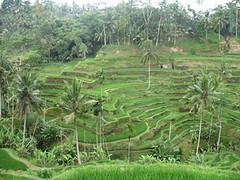
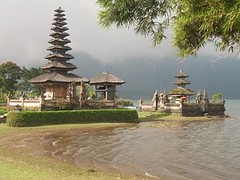
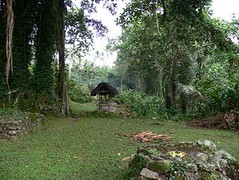
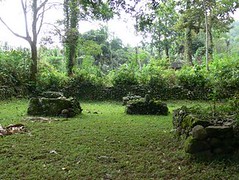
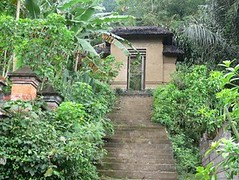
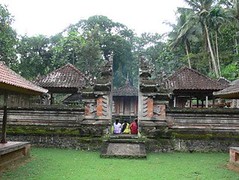
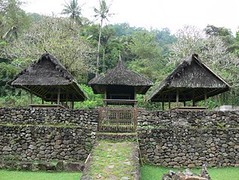
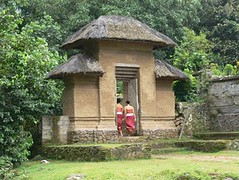
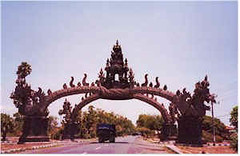


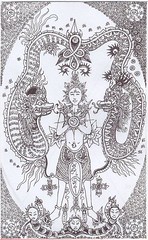

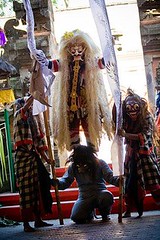

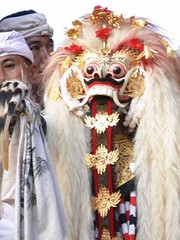
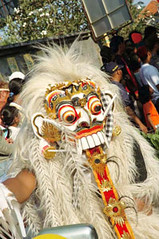
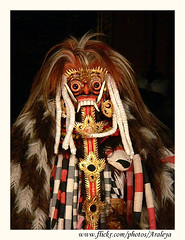

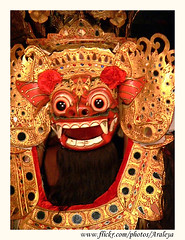
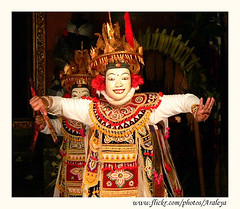
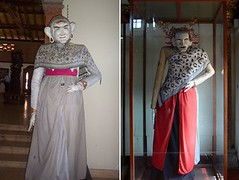
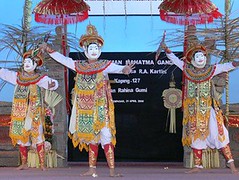


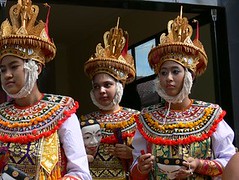


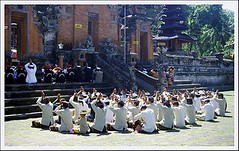

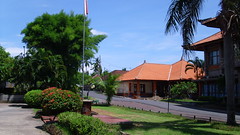
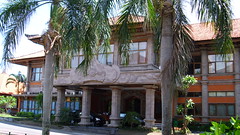

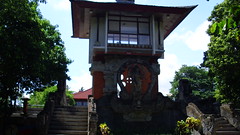
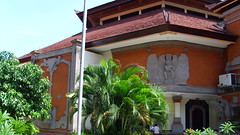
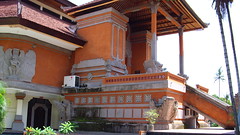
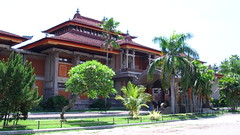
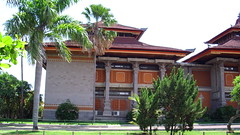
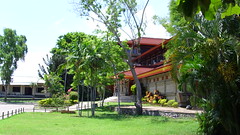
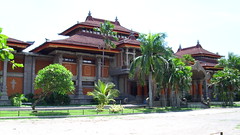
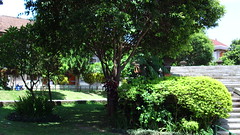


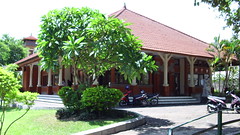

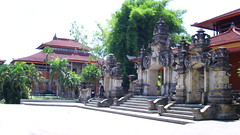
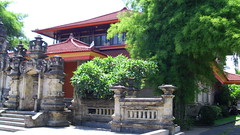


.jpg)




